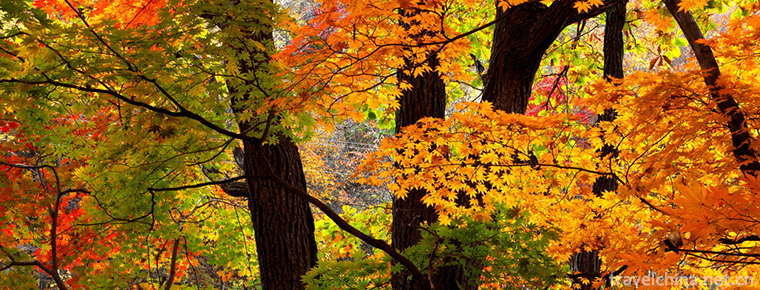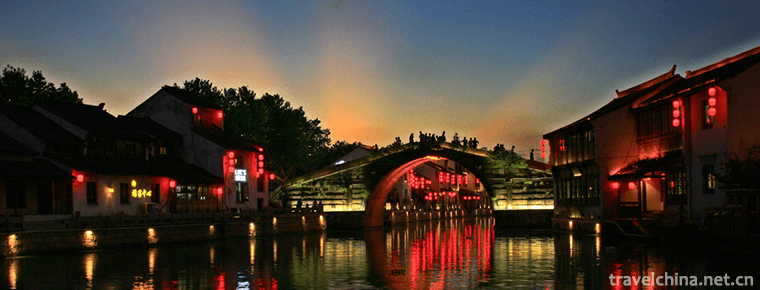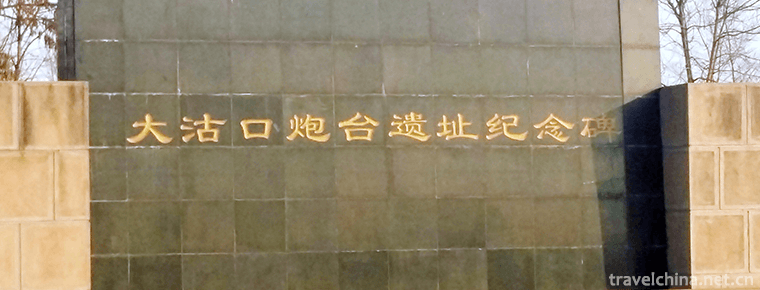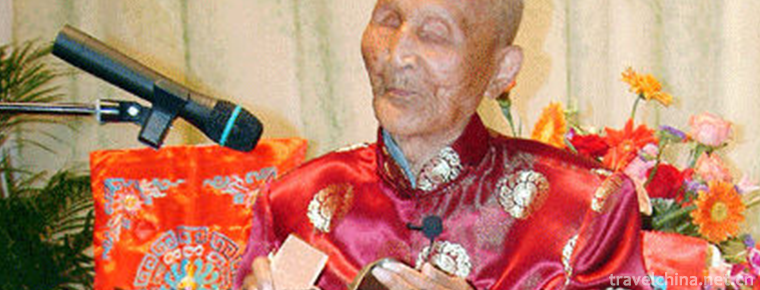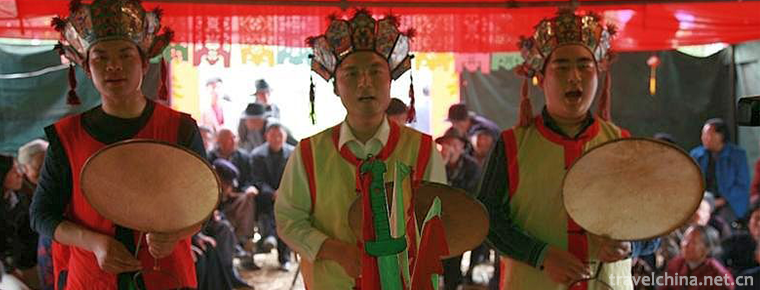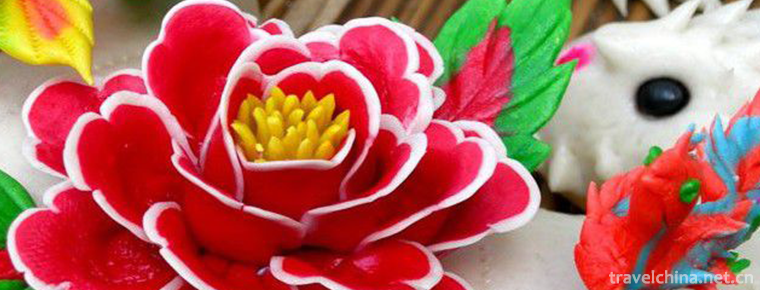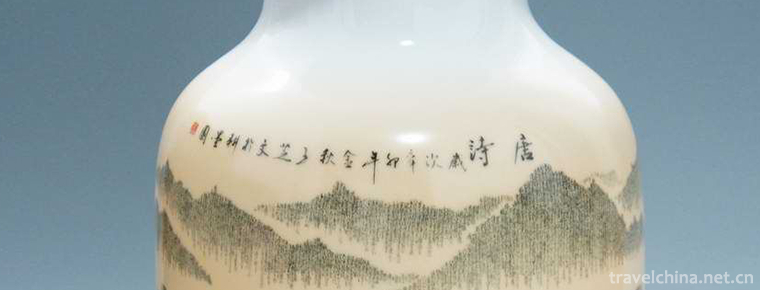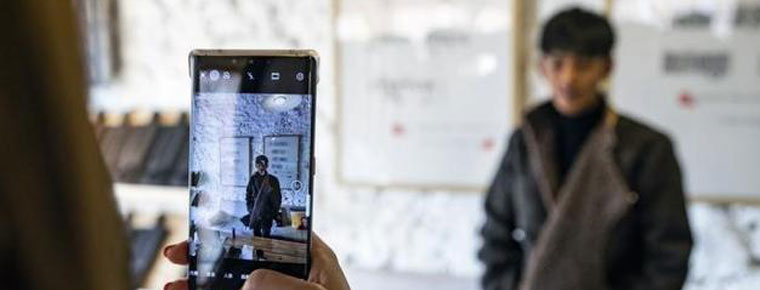Mount Maoshan
Maoshan is located in Jurong City, Zhenjiang City, Jiangsu Province. It is about 10 kilometers long from north to south, 5 kilometers wide from east to west, and covers an area of more than 50 square kilometers.
Maoshan is a famous Taoist mountain in China. It is the birthplace of the Taoist School of the Upper Qing Dynasty. It is called "the Temple of the Upper Qing Sect" by Taoists. It has the reputation of "the first blessed land, the eighth cave sky". It is also one of the six anti-Japanese base areas in China's mountainous areas. There are many scenic spots on the mountain, including nine peaks, nineteen springs, twenty-six caves and twenty-eight pools. They have peaks, mountains, clouds and mists. The climate is pleasant. There are many strange rocks and rocks on the mountain. The caves are deep and secluded. The spiritual springs and sacred pools are scattered all over the mountain. The streams are intertwined vertically and horizontally. The green trees cover the mountain, the green bamboo flourish and the natural treasures are magnificent.
Maoshan's main peak, Damao Peak, is like the head of the green dragon, and also the highest peak of Maoshan, with an altitude of 372.5 meters. Maoshan Scenic Area was listed as a provincial forest park by Jiangsu Provincial People's Government in 1986 and approved as a provincial first-class scenic area. At the same time, it is not only a Taoist holy place, but also an anti-Japanese base. Its natural landscape, human landscape, forest landscape and revolutionary historical concept are integrated into one, which is better than fairyland.
The total planned area of Maoshan is 32 square kilometers. The Wanfu Palace in Jiuxiao occupies it. Ermao Peak and Sanmao Peak are winding down, which reflect the ups and downs of the main peak.
Legend has it that in the 5th year of the Han and Yuan Dynasty (44 BC), the three Mao brothers from Xianyang, Shaanxi Province, came to Maoshan to collect medicine and refine Dan to save the world and save the people. They were called Maoshan Master, the ancestor of Maoshan Taoism. Tao Hongjing, a hermit from Later Qi and Liang Dynasties, founded Maoshan School of Taoism. Since Tang and Song Dynasties, Maoshan has been listed as the "first blessed place" and the eighth place of Tao Dongtian"has attracted many literati and ink poets to leave poems. During the Anti-Japanese War, Marshal Chen Yi and other revolutionary ancestors launched guerrilla warfare with the enemy here, making it one of the six famous anti-Japanese base areas in China. Maoshan has the characteristics of "beautiful mountains, Taoist saints and strange caves". The main scenic spots in the area are Maoshan Daoyuan Jiuxiao Wanfu Palace, Yingong, Qianyuan Guan, Huayang Cave, Jinniu Cave, New Fourth Army Memorial Hall, etc.
Maoshan is located 26 kilometers southeast of Jurong City, Zhenjiang City, Jiangsu Province. It has an advantageous geographical location and extensive transportation. Shanghai-Nanjing Expressway, Ningxia-Hangzhou National Highway, Changli Highway and Jumao Special Tourist Line have convenient transportation. Maoshan has beautiful scenery and abundant natural resources.
Maoshan local Maoshan goose, wind goose, salted grass chicken, tea garden chicken and other poultry are naturally raised in Maoshan farmhouse, Maoshan specialty variety, there are Guozhuang dog meat, Sancha pork, sausage, white fish, wild rabbit, wild duck, pheasant and other game, Maoshan coat, Chishan coat, black rice, wild mountain shoots, hand peeling bamboo shoots, rural areas. There are nearly 300 varieties of wild vegetable, toon bud, mushroom, chestnut, purple corn, Yueguang rice, miscellaneous grain combination, fig, grass eggs, green shell eggs, Maoshan evergreen, white tea, pueraria root tea, Pueraria powder, golden cicada flower, mulberry wine, etc. Adhering to the traditional formula, with a long history and modern technology, it is elaborately made, with unique taste and unique flavor. Maoshan native products come from nature and originate from tradition. "Maoshan family" brand geese adhering to the traditional formula, with modern technology, elaborate production. Its unique taste brings you endless aftertaste.
Maoshan Taoism has a long history. It is said that more than 5,000 years ago, people of the Gaoxin era exhibited public practice in Fulongdi of Juqu Mountain (now Yuchen Village of Maoshan). In the Pre-Qin Dynasty, people of Yan nationality practiced in Yuchenguan of Guo Dynasty; in Qin Dynasty, people of Li Mingzhen practiced in ancient Danyuan (now Qianyuan Guan); and in the Eastern Jin Dynasty, people of Maoshan nationality Gehong practiced in Yuchen Village of Maoshan Baopufeng practised and wrote a book and said that in the second year of Xingning in the Eastern Jin Dynasty (364), Yang Xi and Xu Jing produced "The True Sutra of the Great Tunnel of the Shangqing Dynasty", and established the Maoshan Qing School, a sect with special characteristics in the south of the Yangtze River; Tao Hongjing, a famous Taoist priest in Qiliang Dynasty, lived in seclusion in Maoshan for more than 40 years, and was the main inheritor of the Maoshan Qing School. Maoshan Taoism enjoys a high prestige and status in the history of Taoism in China. It has won the reputation of "the immortal mansion of Qin and Han Dynasty, the Prime Minister of Liang and Tang Dynasties", "the first blessed land, the eighth cave heaven".
During the Tang and Song Dynasties, Taoism in Maoshan reached its peak. There were more than 300 and 5000 Taoist buildings of various sizes, such as palaces, temples, temples, etc. in front of and behind mountains, between peaks and valleys. There were thousands of Taoist priests, including "Three Palaces, Five Views and 72 Mao Ancients". The Taiping Heavenly Kingdom War, the War of Resistance Against Japan and the Cultural Revolution destroyed Maoshan Daoist Academy seriously. Maoshan Daoist Court began to be restored in the late 1970s. In 1982, it was approved by the State Council as the first batch of key palaces open to the outside world. As the saying goes, "Good luck, to Fudi Dongtian - Maoshan", as an important place of Maoshan Road culture, Nine Xiao Wanfu Palace (the top palace) has always been a place where tourists worship incense in the mountains.
Maoshan is a sacred revolutionary shrine. Because of the dangerous terrain in mountainous areas, Maoshan is neighbouring Nanjing in the west, looking at the Yangtze River in the north, Wujin in the east, Changzhou, Jiangyin, Wuxi, Suzhou, Kunshan, Shanghai in the south, and Western Zhejiang in the south. In early December 1937, the Japanese invaded Maoshan, burned, looted, brutally ravaged, and the people had no peace. In June 1938, Chen Yi, Suyu and Zhang Dingcheng led the first and second detachments and advance detachments of the new Fourth Army of the National Revolutionary Army into Maoshan area, mobilized the masses extensively, launched guerrilla warfare against Japan, and established the anti-Japanese base areas behind the enemy lines, becoming one of the six major mountain anti-Japanese base areas in the country. Maoshan's Anti Japanese root
The establishment of base areas is like a sharp knife inserting into the hearts of the enemy, which has greatly restricted the enemy's heavy forces and made valuable contributions to the victory of the Chinese people in the War of Resistance. In those hard and bitter years, how many heroic martyrs have shed their heads and blood for the cause of revolution in Maoshan. They have strengthened Maoshan's magnificent posture with great pride. They have confirmed Maoshan's immortal charm with their vows of magnificent mountains and rivers. They will live forever in the hearts of the people! Here, let us recall once again the heroic deeds of the martyrs before the iron facts.
Maoshan's red journey has become the preferred place for the education of patriotism and revolutionary tradition in government organs, schools, troops, enterprises, institutions and Party and League organizations. Maoshan is a scenic spot with beautiful environment. The natural scenery of Maoshan is fresh and beautiful, with its unique shape, lush branches and leaves, and charming scenery. Since ancient times, there have been nine peaks, nineteen springs, twenty-six holes and twenty-eight pools. The mountains here are not high but elegant, and the water here is not deep but clear.
Maoshan is a low mountain and hilly area. It has not only beautiful scenery, but also abundant natural resources. It is rich in forest, tea and fruit, especially medicinal materials, and it is a natural treasure house of medicines. In the Compendium of Materia Medica compiled by Li Shizhen, a famous pharmacologist in the Ming Dynasty, there are more than 380 kinds of Maoshan medicinal materials, among which Mao Atractylodes and Taibao Huangjing, named by Tang Xuanzong, are the best. In 1915, Atractylodes lanceolata won the gold medal in Panama.
There are two Maoshan mountains in Jiangsu Province. One is south of the Yangtze River, called Nanmaoshan; the other is Xinghua City on the North Bank of the Yangtze River, called Beimaoshan. During the reign of Qianlong in the Qing Dynasty, Ren Dachun, a representative of Yangzhou School famous for textual research, said in his Monument to Crossing Maoshan that "Beimaoshan is the place where Sanmao Zhenjun first practiced Taoism". That is to say, in the Jingdi period of the Western Han Dynasty, Mao Ying, Mao Gu and Mao Zhong, three brothers, initially practiced Taoism to save the people in Beimaoshan, which was called Maoshan. Later, they were invited to go to Juqu Mountain in the south of the Yangtze River, which distinguished the south from the north.
As early as the Han Dynasty, in Xianyang, Shaanxi Province, there were three brothers of Mao family, brother Mao Ying, second brother Mao Gu and third brother Mao Zhong, who saw through the red dust and wrote down the sigh that "only in spring can we see the willow green, autumn wind can see the chrysanthemum yellow, glory is eventually a dream of three more, richness is also the same as September frost". They traveled to the shore of the Yellow Sea day and night to see a high mountain, tall trees, shady days, grass, citronella everywhere, they left the mountain to live in seclusion, cultivation, medicine and alchemy, save the world. After a long time, the Mao brothers, finally achieved success, ranked in Xianban. Later generations built Sanmao Taoism, calling them Sanmao real people and Sanmao Mountain. Those who come to the mountains to learn Taoism and seek medical treatment are always on their way. At that time, the plague was prevalent in the area of Jurong in the south of the Yangtze River. Wen Jiangbei's Maoshan Mountain had three mao real people who were highly humane, skilled in medicine and could cure all kinds of diseases, so they came to seek treatment. Sanmao real people went to Huayang Cave in Juqu Mountain with pleasure. Hundreds of people have been cured. After the death of Sanmao Zhenjunxian, people thanked Daide, built Temple peaks and offered sacrifices to statues. Thereafter, Juqu Mountain was renamed Nanmaoshan and Sanmaoshan in the north of the Yangtze River was renamed North Maoshan, or Maoshan for short.
Maoshan Taoist temple
At its peak, there were 257 temples and more than 5,000 houses in Maoshan. When the Taiping Heavenly Kingdom was subjected to war, until the end of the Qing Dynasty, there were still "three palaces and five views". The three palaces are Chongxi Longevity Palace, Jiuxiao Wanfu Palace and Yuanfu Wanning Palace. The five views are Deyou View, Renyou View, Yuchen View, Baiyun View and Ganyuan View.
In September 1938, Japanese invaders swept Maoshan and burned more than 90% of the Taoist houses. During the "Cultural Revolution", Maoshan Daoist Court was destroyed again, leaving only some ruins. Since the Third Plenary Session of the Eleventh Central Committee of the Communist Party of China, religious policies have been implemented. The government has allocated funds to restore the Wanfu Palace in Jiuxiao and Wanning Palace in Yuanfu, which are called Maoshan Daoyuan.
Spring trip to Maoshan, green hills, fragrant grass and trees. The green mountain is set off by the tender yellow of the whole world, and the wild flowers in the mountains give the fantasy of the mountain and forest all the way. The mist is as light as gauze, and the sunset is as picturesque. Tour Maoshan in summer, shade of green trees and green onions. You can sweat like rain on the nine curves and eighteen curves under the green trees, trying to compete with the mountains, or you can watch the sunrise and the clouds at dusk. It was clear after the rain, but there was a thin cloud in the deep valley among the woods. At this time, the trees on the mountain were sparkling like crystal green. Maoshan in autumn, the sky is high, cloudy and colorful. The maple leaves falling in the woods will arouse your endless reverie. See the reed flowers waving lightly in the wind, listen to the sound of Happy Happy Spring, and feel the life cycle in the unintentional dullness. Travel to Maoshan in winter, wrapped in silverclothes, misty and fluttering. Or the sun shines, the mountains and forests are full of vigorous ideals. Listening to the Taoist Fairy Music in silence, there is a feeling of "three thousand miles of flower flying in Buddha's land, people on the twelfth floor of Yao Chi"!












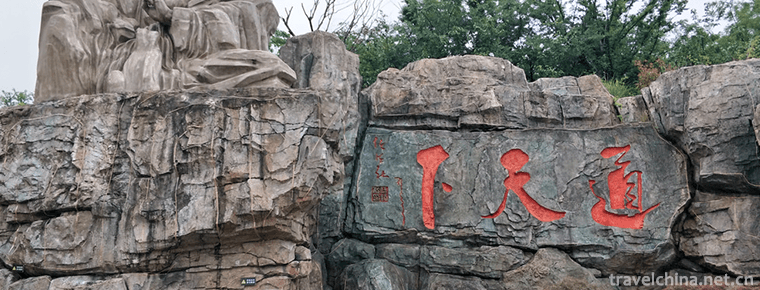
-
Shanghai Park Hyatt Hotel
Shanghai Park Hyatt Hotel is an exquisite modern Chinese-style residential hotel, located on the 79th to 93rd floors of Shanghai Global Financial Center, known as the Vertical Comprehensive Urban Area.
Views: 196 Time 2018-12-16 -
Guanmenshan National Forest Park
Guanmenshan National Forest Park is located 70 kilometers southeast of Benxi City. The Forest Park covers an area of 3517 hectares, with an altitude of 310-1234 meters and a forest coverage .
Views: 154 Time 2018-12-24 -
Qingming Bridge Ancient Canal Scenic Area
Qingming Bridge Ancient Canal Scenic Area is located at the southern end of Wuxi city center, covering about 44 hectares of scenic area. The scenic spot is composed.
Views: 161 Time 2019-02-07 -
Tanggu Dagukou Battery Site Museum
Dagukou Battery Site Museum is located on both sides of the Haihe River estuary in the southeast of Tanggu, Tianjin Binhai New Area. It is a national education and youth education .
Views: 154 Time 2019-02-13 -
Sing the news
Singing news is a traditional local opera popular in eastern Zhejiang, especially in Fenghua, Beilun, Zhenhai, Yinzhou and Xiangshan. Singing news has a long history, about a hundred years ago.
Views: 201 Time 2019-04-16 -
End drum cavity
Weishan Lake Drum Tune, also known as Duangong Tune, is a traditional folk art of the Han nationality originating in Weishan County and Dongping County of Shandong Province .
Views: 212 Time 2019-04-28 -
Dough Flowers
Flower, commonly known as "flower bun", belongs to the art of facial sculpture. There are weddings, funerals, birthday gifts, Festival buns. Flowers are made of ordinary flour and special fl.
Views: 97 Time 2019-06-05 -
Nanping Nanci
Nanping Southern Ci is a traditional form of music popular in Nanping, northern Fujian Province. It is generally believed that the Southern Ci in Jiangnan area developed gradually with the local tradi.
Views: 295 Time 2019-06-07 -
Ceramic microbooks
Ceramic micro-calligraphy is one of the folk skills which perfectly combines Chinese calligraphy art with color porcelain art. It has a long history. Artists not only maintain the traditional style, b.
Views: 313 Time 2019-06-18 -
Furong mountain
Furong mountain in Sichuan Province is a snow mountain, stretching for hundreds of miles. Furong mountain scenic area is composed of Furong mountain, Shunan hot spring, hanging coffin.
Views: 132 Time 2020-10-16 -
A city with a fire by one Cold thinking behind Ding Zhen hot
With the popularity of microblogging for nearly seven months, the popularity of microblogging has been created for a long time. At the same time, the hometown of Ding Zhen, Litang County, Ganzi Tibetan Autonomous Prefecture, also ushered in several times the search volume and real gold and silver tourism orders..
Views: 74 Time 2020-12-07 -
Meishan special food
Meishan traditional delicacies and specialties include: sugar and oil fruit, spicy sausage, Sichuan fried spring rolls, Dongpo bean curd elbow, stone bean curd, Dongpo cuttlefish, Dongpo sausage, sweet potato sugar, Meishan Qiao Jiao beef, yameizi so.
Views: 242 Time 2020-12-18

